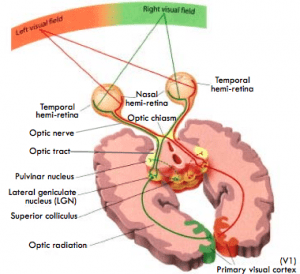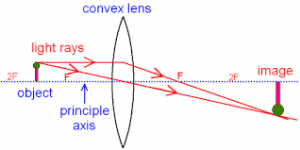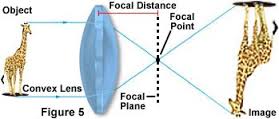Cakkhu viññāṇa is not just “seeing a picture” of an object; it includes gauging the distance of the object from us. Furthermore, it simultaneously generates recognition (perception), feelings, and other mental factors.
July 15, 2016; revised October 19, 2020; rewritten January 13, 2023
Introduction
1. You may have experienced or seen the following happen to someone else. You are crossing a street and see a speeding car approaching. You instinctively run to the safety of the pavement.
- You see the car coming, gauge its speed and distance, and realize it is too fast. Thoughts of danger and fear arise, and you quickly jump out of its way. All that happens in a split second.
- As you can see, several things happened in that short time. In particular, you recognize it is a car and its distance from you. Since you perceive it is coming too fast, fear arises, and you jump.
- Scientists have only begun to investigate the arising of recognition and feelings associated with an event. But they have made recent progress in resolving the issue of “gauging the distance in a visual event.”
2. In 1988, Dee Fletcher almost died due to carbon monoxide poisoning. Her husband found her unconscious just in time to save her life. However, when she recovered, she had lost “sight” in the ordinary sense of the word.
- She could not see or recognize someone standing right in front. She lost the ability to read a book.
- But soon, she realized that she had some peculiar abilities. She could grab a pencil from the hand of a person who held it in front of her, even though she could not actually “see” the pencil or the person.
- Her vision is good enough for picking something up but not good enough for seeing it!
Dee Fletcher’s Case Provided Many Clues on Vision
3. Since then, researchers have done numerous experiments on her, which have led to some astonishing findings about how vision works.
- For example, they tested her with a mailbox with a narrow slot for inserting letters. Even though she could not see the mailbox — let alone the slit or the envelope — she was able to insert the letter in the slot without effort. Even when they tilted the slit, she did not have a problem at all! It was as if a phantom inside her was doing that task for her.
4. Another ability of Dee was walking around the house without bumping into furniture or walls. Since that ability could be due to her familiarity with the house, they took her to an unfamiliar trail. She had no problem walking there without tripping over rocks or bumping into trees.
- This disorder is known as visual agnosia.
- It turns out that there are two relatively independent visual systems in the brain: One is for conscious perception (visual cortex), which was severely damaged in Dee. The other was for unconscious control of action (superior colliculus), which is largely preserved.
Two Ways of Visual Processing
5. The following figure shows the optical nerve splitting and connecting to those two areas in the brain.
You can download the figure here.
6. The presence of two visual processing streams in the brain has been known only since 1982. Even though the role of the visual cortex in the brain (in producing a picture “in mind”) had been known before that, the role of a second processing area in the brain (superior colliculus) that helps with figuring out the “depth of vision” or how far a given object was proposed in 1982 by Leslie Ungerleider and Mort Mishkin.
- Of course, their model helped explain the symptoms experienced by Dee Fletcher. She had parts of her visual cortex damaged by carbon monoxide poisoning, while her superior colliculus was left intact. Her eyes sent the signals to the visual cortex, but the damaged visual cortex could not process that signal.
- You do not need to know the details of the visual cortex, superior colliculus, or any other technical term to get the idea I plan to convey. I do not know the finer details about them either.
How Vision Happens- Still a Mystery for Science
7. Of course, scientists are only aware that those two areas in the brain contribute to those two functions. They do not know exactly how the visual cortex gleans information about the object (i.e., its visual characteristics.) Also, it is not known how the superior colliculus figures out the object’s dimensions and how far it is (to grab an item correctly, both types of information are needed).
- We need to realize that “no light” is going to the visual cortex, and there is no screen at the back of the head that displays the object in question. The optical nerve only transmits a chemical (and electrical) signal. The visual cortex somehow generates a “picture” for our minds to see.
- Even more mysterious is how the superior colliculus figures out the depth of vision from that chemical signal coming through the optical nerve.
- We will come back to these issues in upcoming posts, but first, let us continue with our discussion on what the scientists know at this time and how they found them.
Further Details of Dee Fletcher’s Case
8. many research papers describe experiments involving Dee Fletcher, and the two principal researchers have written a book on this research: “Sight Unseen – An Exploration of Conscious and Unconscious Vision” by M. A. Goodale and A. D. Milner (2004).
- The above book is a bit expensive. Chapter 4 of V. S. Ramachandran’s popular book, “Phantoms in the Brain” (1998) provides a less technical description. That book also describes some other interesting findings about the brain. In future posts, I hope to discuss some of those observations (particularly his and others’ work on “phantom limbs”).
- There is also a Wikipedia article on the Two-streams hypothesis on vision.
9. The book by Goodale and Milner also describes a visual problem that is the opposite of that of Ms. Fletcher. This syndrome is called “optic ataxia.” Those with it can “see” and recognize objects very well, but they have difficulty in actions involving them.
- Those who suffer from optic ataxia can see the mailbox and slit described in #2 above. However, they have much difficulty putting a letter through the slit.
- It turns out that these people have their superior colliculus damaged, but their visual cortex works fine.
How Does the Mind Figure out the Distances to Objects Around Us?
10. Have you thought about how we can move around without bumping into each other and other objects like trees on the ground and cars on the road? The presence of the two processing streams can BEGIN TO explain how the brain figures out not only “what is in front of us (a human, tree, or a car)” but also “how far is it at and how big it is.”
- As mentioned above, part of the signal going through the optical nerve to the visual cortex deals with the first task, and the other part going to the superior colliculus deals with the “how far and how big” issue.
10. Even though scientists have figured out that those two areas in the brain (visual cortex and the superior colliculus) somehow extract the two kinds of information, they have no idea how those areas extract that information from the chemical signal coming through the optical nerve.
- Scientists know that the lens in an eye projects an image of the object to the back of the eye (retina); see the figure above. It is pretty much the same as an image you can see with a lens:
This is pretty much how a camera captures an image:
How Can a Chemical Signal Provide the Perception of Sight (and Light)?
11. Of course, the film in an old camera undergoes chemical changes when the image falls on it. Then that film is chemically processed to reveal the picture.
- In the same way, when the image of an object falls on the retina of an eye, the cells on the retina generate a chemical (and electrical) signal. The optical nerve transmits this signal to the visual cortex and the superior colliculus in the brain. There is no “picture” transmitted to the brain.
- So, how does the visual cortex generate a visual of the object starting with the chemical signal from the eye?
- Even more puzzling is how the superior colliculus figures out the distance to the object (and the object’s dimensions) solely based on that same signal.
12. Even within the visual cortex, there are 30 different areas specialized to carry out different tasks. They all help provide a “comprehensive picture” of the object.
- For example, the area called V4 deals with the object’s color but does not care about the direction of motion.
- On the other hand, area MT (also called V5) responds to targets in the visual field based on their direction of motion but does not care about the object’s color. Specialized sub-areas in the visual cortex carry out multiple tasks.
The brain is Not a Computer – It Can Change
13. Brain is indeed a very sophisticated machine! However, as we will find out in upcoming posts, it is not a typical machine like a computer. It can change on its own!
- While a computer cannot get rid of parts that go bad, the brain can replace or repair bad parts and even make new parts. This is puzzling neuroscientists right now. They have confirmed that these things happen (I will discuss examples in future posts) but have no idea HOW the brain does that. (However, when a whole section is damaged, like in the case of the visual cortex or superior colliculus, such rejuvenation is not possible).
- The key to this puzzle is the following. Our “mental body,” or the gandhabba, controls the physical body. The gandhabba, or the manomaya kāya, has three components: kammaja kāya, cittaja kāya, and utuja kāya. The cittaja kāya plays the dominant role in CHANGING brain functions. In other words, it is OUR THOUGHTS that can change the brain!
- Note that “cittaja kāya” means not a separate “body” but part of the manomaya kāya associated with our physical body.
- Ultimately, one attains Nibbāna by gradually transforming one’s brain. In other words, getting rid of greed, hate, and ignorance can change one’s brain! However, even a Buddha can only show the way, and one has to make an effort.
- The four types of bodies that we have and the gandhabba are discussed in the section “Gandhabba (Manomaya Kaya).” The critical functions of the cittaja kāya are also discussed in the post, “Udayavaya Ñāna – Importance of the Cittaja Kaya.”
Buddha Dhamma and Science – a Symbiotic Relationship
14. We live in a truly opportune time to comprehend the value of Buddha Dhamma. Modern science provides clues that can be used with Buddha Dhamma to clarify many issues and vice versa. See “Buddha Dhamma – A Scientific Approach” and “Quantum Mechanics and Dhamma.”
- In this series of posts, I hope to suggest some such avenues for scientists to explore based on Buddha Dhamma, which can also explain many of these “new findings.”
- As I have mentioned, attaining Nibbāna does not require such details. However, for most people, future confirmation of such “predictions” hopefully will help build confidence in Buddha Dhamma and to appreciate its value.
- Of course, the real value of Buddha Dhamma is not in exposing such mundane things but in showing the path to liberation from suffering (Nibbāna). But it is good to have faith in Buddha Dhamma to feel confident that one is not wasting one’s precious time in learning Buddha Dhamma.




